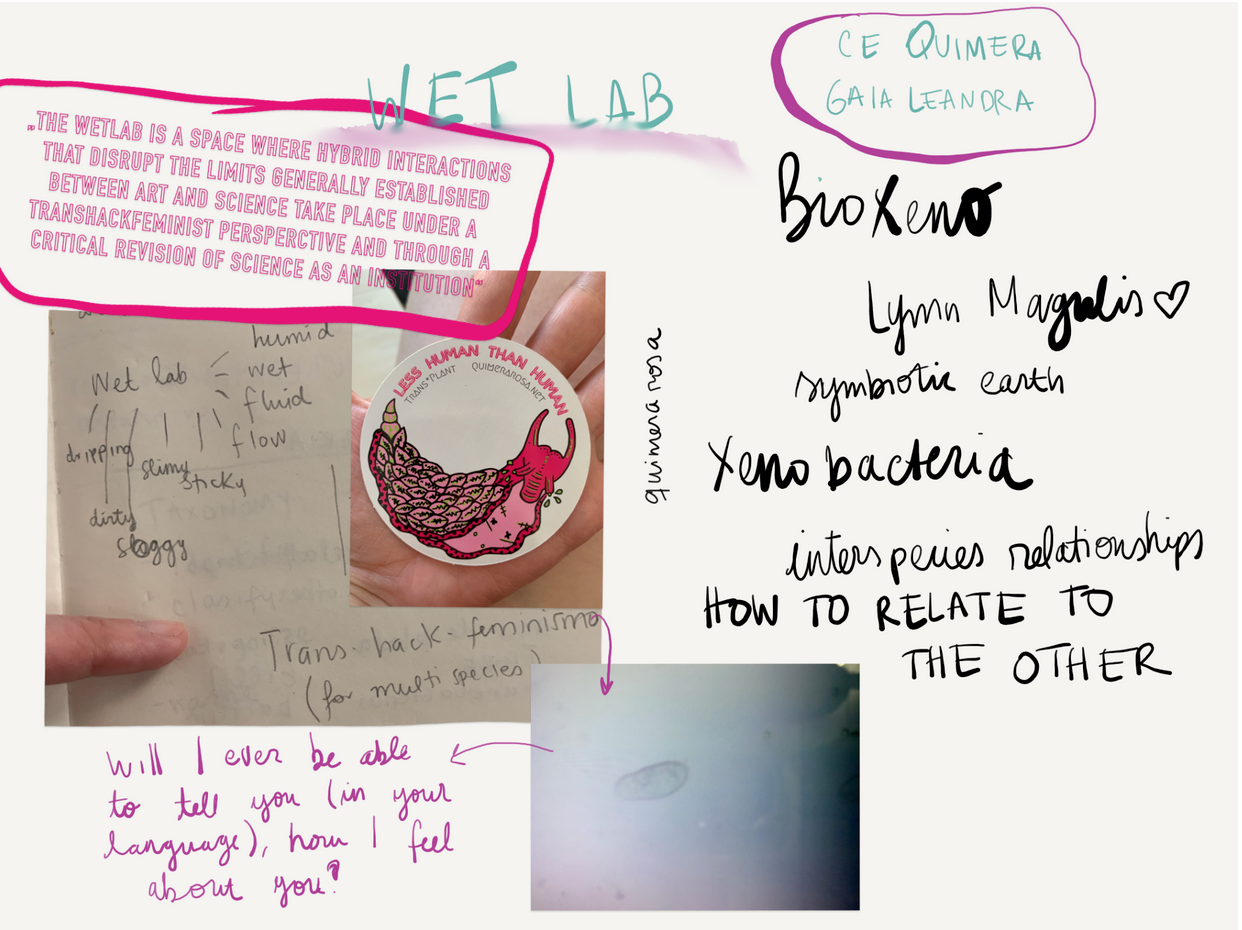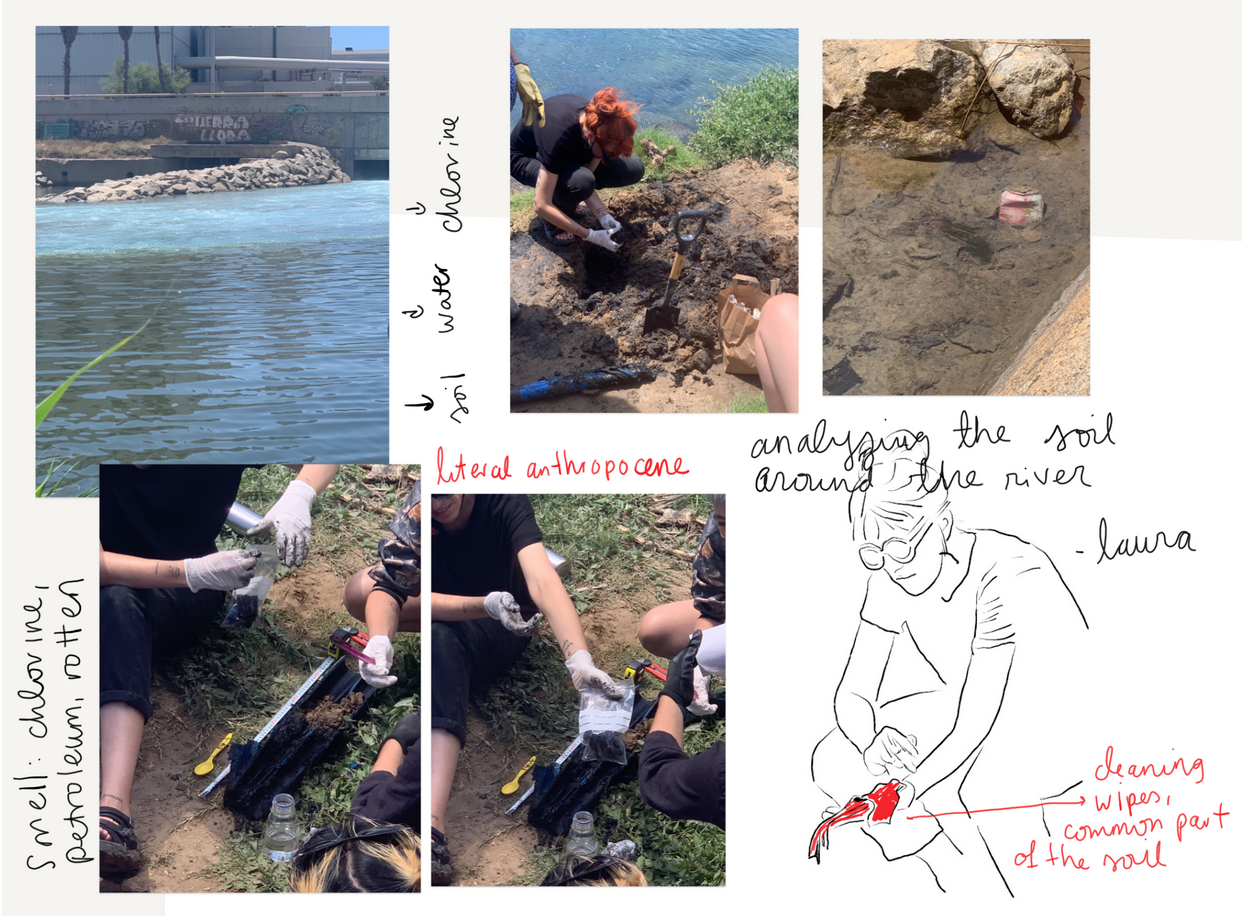Day 1: WETLAB

After several last minutes changes, updates and vicissitudes the Summer program has finally started.
To break the ice and get people to know each other the participants were welcomed with a coffee break in Hangar venue. Afterwards, Laura Benítez Valero did an introduction of the Biofriction project and the Summer Program activities.
In the second part of the morning, part of the Wetlab collective
At the end of the day, each participant learned about microscopy techniques, visual recognition, drawing and scientific/artistic speculation in relation to the bacterial world.
The second day of the Biofriction Summer Program was really an intensive node focused on Radical Ecology with both theoretical, practical and fieldwork of the participants.
During the morning participants had a more theoretical part that was linked to the workshops and activities of the second part of the day.
In fact, participants assisted to a presentation by Regine Rapp & Christian de Lutz, as part of Art Laboratory of Berlin, and Xose Quiroga, as part of IMVEC.
After coming back to Hangar participants took part in the two interconnected workshops: the density column experiment to identify plastic waste by density and the session on the construction of the Coqui conductivity of liquids through sonification.

On the third day of the Biofriction Summer Program participants were welcomed with a lecture by Joanna Zylinska about Life, death and extinction: Minimal ethics for the whole universe mediated by Laura Benítez Valero. Joanna’s intervention
At the end of the morning, participants shared ideas, discussed what’s the meaning of ethics in relation to humans’ responsibility for various thickenings of the universe and how they can respond to the tangled mesh of connections and relations unfolding in it.
In the afternoon, Arnau Sala Saez did his experimental workshop SHALLOW LISTENING / SONIC UNCONSCIOUSNESS. Participants experienced the practice of listening while taking into account our current social context, technologies and new forms of communication.

The fourth day of the Biofriction Summer Program focused on (Bio)hacking_with_care.
Participants were welcomed by a presentation by artists Mary Maggic and Paula Pin which explained their practices and shared their personal path that brought them to experiment with biomaterials.
Successively, the artists talked about how our bodies are stolen by capitalist interests and surrounded by pervasive toxicities that affect us.
In the second part of the day, participants used personal products that contain a xenoestrogen ingredient (plastic bottles, cosmetics, soaps, etc) from which they extracted hormones by means of DIY techniques and methanol. During the activity, the group of biofrictioners prepared a xenoestrogen cocktail and inoculated it to the Oyster mushroom. This will be grown on petri dishes stained with Remazol blue, a synthetic fabric dye. The day after, participants checked their growth over time to see how mushrooms respond to the toxic residues of human industrial capitalism.
This workshop was an outcome of a collaborative residency “Prototyp_ome” between Mary Maggic, Rian Hammond, and Paula Pin at Hangar in Barcelona in September 2017.

The fifth day of the Biofriction Summer Program focused on Frictions.
Participants were welcomed by Helen Torres which talked about what does it mean science fiction and what are the challenges in relation to different practices. In the second part of the morning, a conversation between Helen and Possible Bodies took place. The aim of the conversation was to bring up several issues such as: how to expand, density and thicken what’s possible, instead of staying aligned with the deadly reproduction of too probable techno events? How is it that some facts have been solidified rather than others? How to think of fiction as a problem and not only as a potential for radical thinking? To discuss these questions, facilitators provided participants with several inputs and materials. To conclude, they have an intense wrap-up session and discussion.
In the late afternoon, the participants also continue part of the workshop of day 4 #prototyp_ome with Mary Maggic and Paula Pin, to check their xenoestrogen cocktail produced the day before.
Day 6: SHARE OF KNOWLEDGE AND CONCLUSION
The last day of Biofriction Summer Program was focused on the sharing of works, reflections and conclusions about the topics of the week. In the morning, some participants shared their works research, as well as some activities carried out during the Summer School organised by Cultivamos Cultura. (Furthermore, the group talked about ideas for possible future alliances).
In the afternoon, the Biofriction group visited the exhibition Science Friction. Living among companion species at the CCCB where some of the artists who have participated in the Biofriction Summer Program are exhibiting their work.
Photo Credits: Daniela Brill Estrada
RESOURCES:
Download or check out the different resources that expand on, or review the topics covered during the Biofriction Summer Program!
Day 1
Day 2
Day 3
- Arnau Sala Fanzine: Shallow Listening _ Sonic Unconsciousness
Day 4
Day 5
